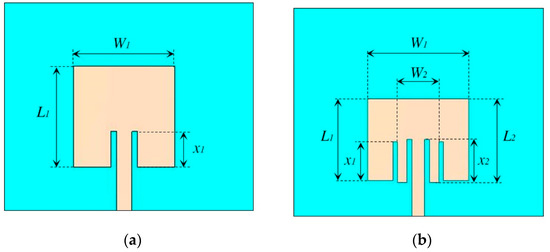

Ozgun, O., et al., "Design of dual-frequency probe-fed microstrip antennas with genetic optimization algorithm," IEEE Transactions on Antennas and Propagation, Vol.
#Microstrip antenna theory and application s. zhang Patch
Uduwawala, "A broadband triple-frequency patch antenna for WLAN applications using genetic algorithm optimization," 7th IEEE International Conference on Industrial and Information Systems, 1-4, 2012.ġ9. Holter, "Broadband fragmented aperture phased array element design using genetic algorithms," IEEE Transactions on Antennas and Propagation, Vol. Rahmat-Samii, "Genetic algorithms in engineering electromagnetics," IEEE Antennas and Propagation Magazine, Vol. L., "An introduction to genetic algorithms for electromagnetics," IEEE Antennas and Propagation Magazine, Vol. Yablonovitch, "Photonic band-gap materials for high-gain printed circuit antennas," IEEE Transactions on Antennas and Propagation, Vol. Khamis, "High directivity antenna using a modified Peano space-filling curve," IEEE Antennas and Wireless Propagation Letters, Vol. Jecko, "An electromagnetic bandgap resonator antenna," IEEE Transactions on Antennas and Propagation, Vol. Xu, "A novel high-directivity microstrip patch antenna based on zero-index metamaterial," IEEE Antennas and Wireless Propagation Letters, Vol. Tayarani, "Analysis and design of dual band high directivity EBG resonator antenna using square loop FSS as superstrate layer," Progress In Electromagnetics Research, Vol.


Shafai, "On the characteristics of the highly directive resonant cavity antenna having metal strip grating superstrate," IEEE Transactions on Antennas and Propagation, Vol. Shafai, "Investigation into the effects of the patch-type FSS superstrate on the high-gain cavity resonance antenna design," IEEE Transactions on Antennas and Propagation, Vol. Slattman, "Optimization of a stacked patch antenna for high directivity," 13emes Journees nternationales de Nice sur les Antennes (JINA, 317-372, 2004, 8. Soler, "Stacked H-shaped microstrip patch antenna," IEEE Transactions on Antennas and Propagation, Vol. Romeu, "High directivity fractal boundary microstrip patch antenna," IEE Electronic Letters, Vol. Roy, "Metallized foams for fractal-shaped microstrip patch antennas," IEEE Antennas and Propagation Magazine, Vol. Blanch, "High directivity modes in the koch island fractal patch antenna," IEEE Antennas and Propagation Symposium, 1696-1699, 2000.Ĥ. Soler, "Small and high directivity bowtie patch antenna based on the sierpinski fractal," Microwave and Optical Technology Letters, Vol. A., Antenna Theory and Design, 2nd Ed., John Willey & Sons, Inc., 1997.Ģ. This results in a simpler design of a single high-directivity patch, which can substitute an array of two elements operating in the fundamental mode.ġ. The antenna has been fabricated and the simulation results are in good agreement with the measurements. The specialty of this design is the use of GA to select the optimized shape and the feeding position instead of a known shape and a fixed feeding position. The antenna operates in a higher-order mode at 4.12 GHz and the geometry fits inside a patch of 40 mm × 40 mm on a substrate with a relative permittivity of 3.38 and a thickness of 1.52 mm resulting in a directivity of 10.5 dBi. Therefore, the proposed method is robust for manufacturing. This avoids optimized geometries where cells have only an infinitesimal connection. The proposed GA method divides the overall patch area into different cells taking into account that cells have a small overlap area between them. In this sense, this paper presents a novel patch antenna design with high directivity in the broadside direction by using genetic algorithms (GA).

Therefore, the solution becomes simpler as there is no need for a complicated feeding network. A high-directivity patch antenna with broadside directivity is attractive, since a narrow beam can be obtained without the need of using an array of antennas.


 0 kommentar(er)
0 kommentar(er)
